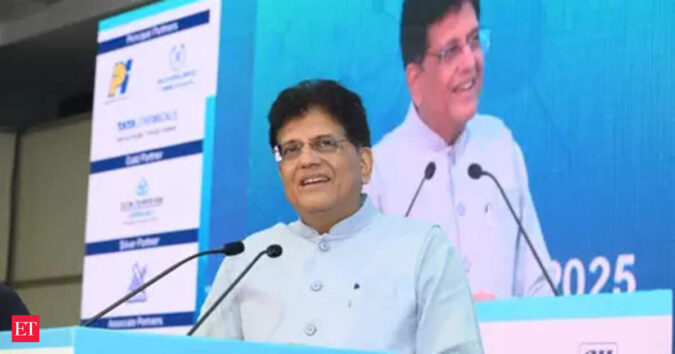The minister highlighted that India has successfully concluded trade pacts with developed nations such as Australia, the United Arab Emirates, and the European Free Trade Association (EFTA) bloc, and has also signed an agreement with the United Kingdom.
“We have done free trade agreements with many developed countries in the last three years. We are in active dialogue with the US, EU, Chile, Peru, New Zealand, and Oman,” Goyal told reporters. “It clearly shows that India is the favoured and preferred destination both for investment and for bilateral trade,” he added.
Talks to deepen trade links with Brazil
Goyal also confirmed that discussions were held with Brazilian officials to expand the existing preferential trade agreement, with the aim of increasing India’s presence in the South American market. “We have discussed expanding our preferential trade agreement from its current level so that we can, in the future, penetrate the South American market in a bigger way,” he said.
An official Indian delegation is currently in Washington for the latest round of negotiations with US trade officials, which will continue until October 17. In February, both nations directed their teams to work toward a proposed Bilateral Trade Agreement (BTA), with a target to finalise the first tranche by the fall of 2025.So far, five rounds of negotiations have been completed. Goyal had also led an official visit to New York last month for trade discussions. The talks are seen as critical to restoring momentum in bilateral relations strained by the steep tariffs imposed by the Trump administration.The US has levied a 50% tariff on Indian goods, including an additional 25% duty on imports linked to Russian crude purchases. India has termed these measures “unfair, unjustified, and unreasonable.” The Indian industry has also expressed concern over Washington’s revised H1B visa policy.
However, recent phone conversations between Prime Minister Narendra Modi and President Donald Trump have revived optimism that the ongoing negotiations could lead to a mutually beneficial trade deal.
Bilateral trade on upward track
In September, Assistant US Trade Representative for South and Central Asia Brendan Lynch held discussions with Indian officials in New Delhi. Both sides agreed to accelerate efforts for an early and balanced conclusion of the proposed agreement.
The pact aims to more than double bilateral trade to $500 billion by 2030 from the current $191 billion. The US remained India’s largest trading partner for the fourth consecutive year in FY2024-25, with bilateral trade valued at $131.84 billion, including $86.5 billion in exports. The US accounts for about 18% of India’s total goods exports, 6.22% of imports, and 10.73% of overall merchandise trade.
Despite this, India’s merchandise exports to the US declined 11.93% in September to $5.46 billion, while imports from the US rose 11.78% to $3.98 billion, according to the commerce ministry data.
With several FTAs in place and high-level negotiations underway, India’s trade diplomacy continues to position the country as a central player in the evolving global trade landscape.
(With inputs from PTI)
